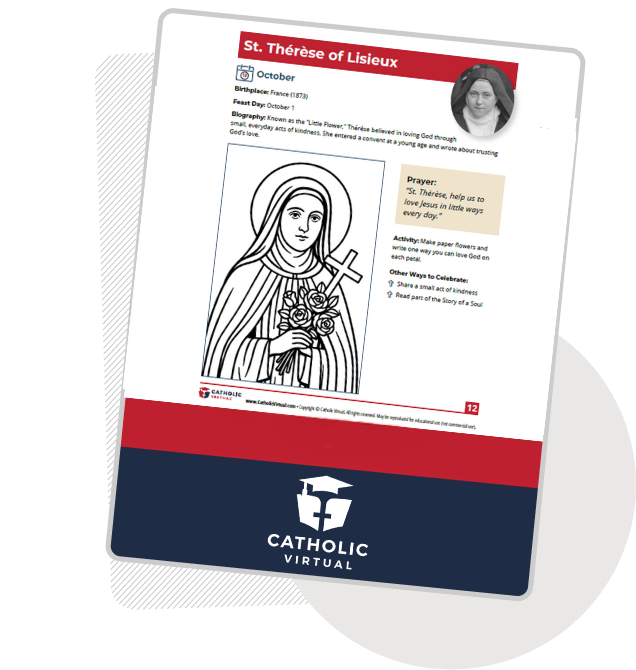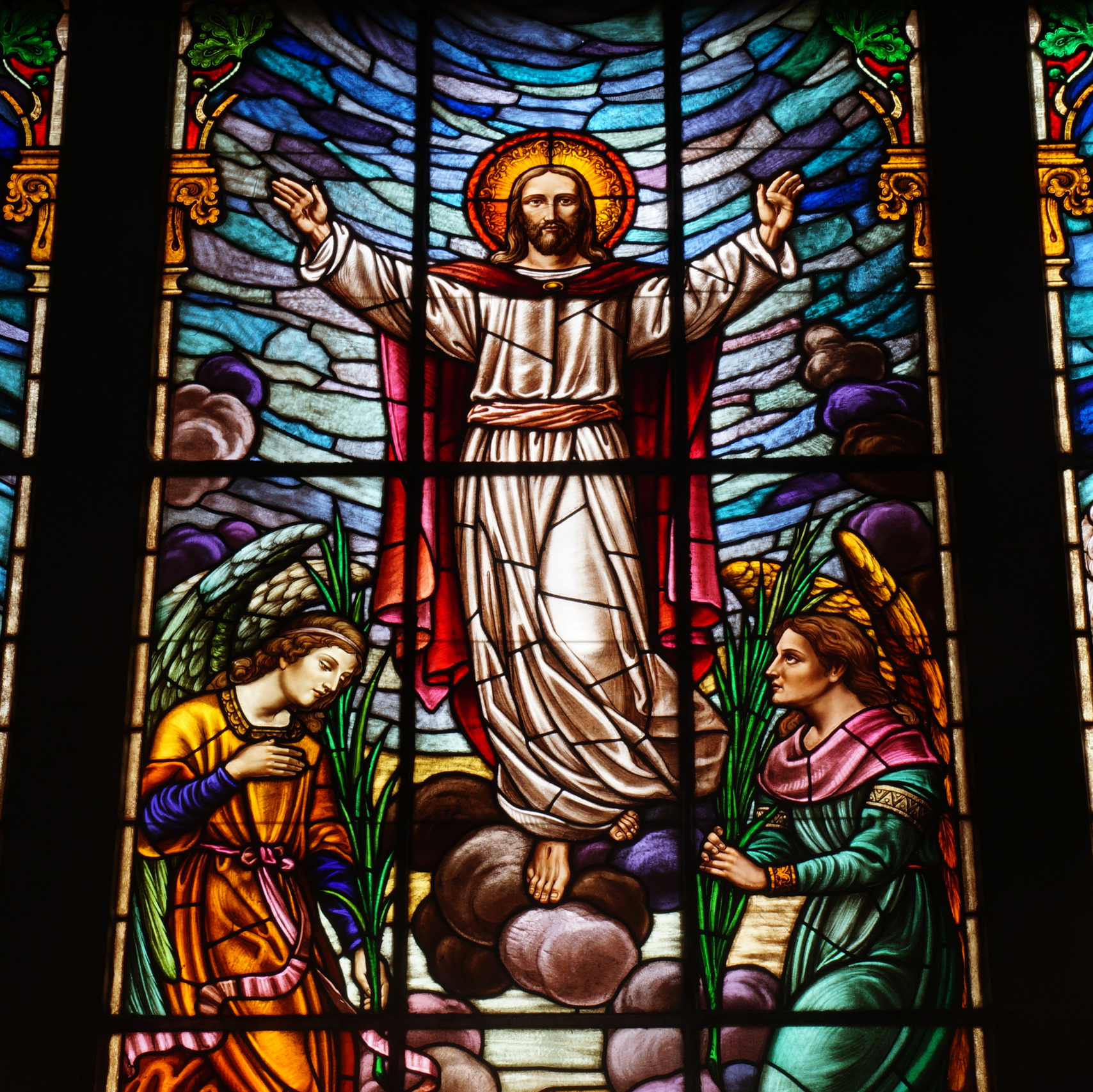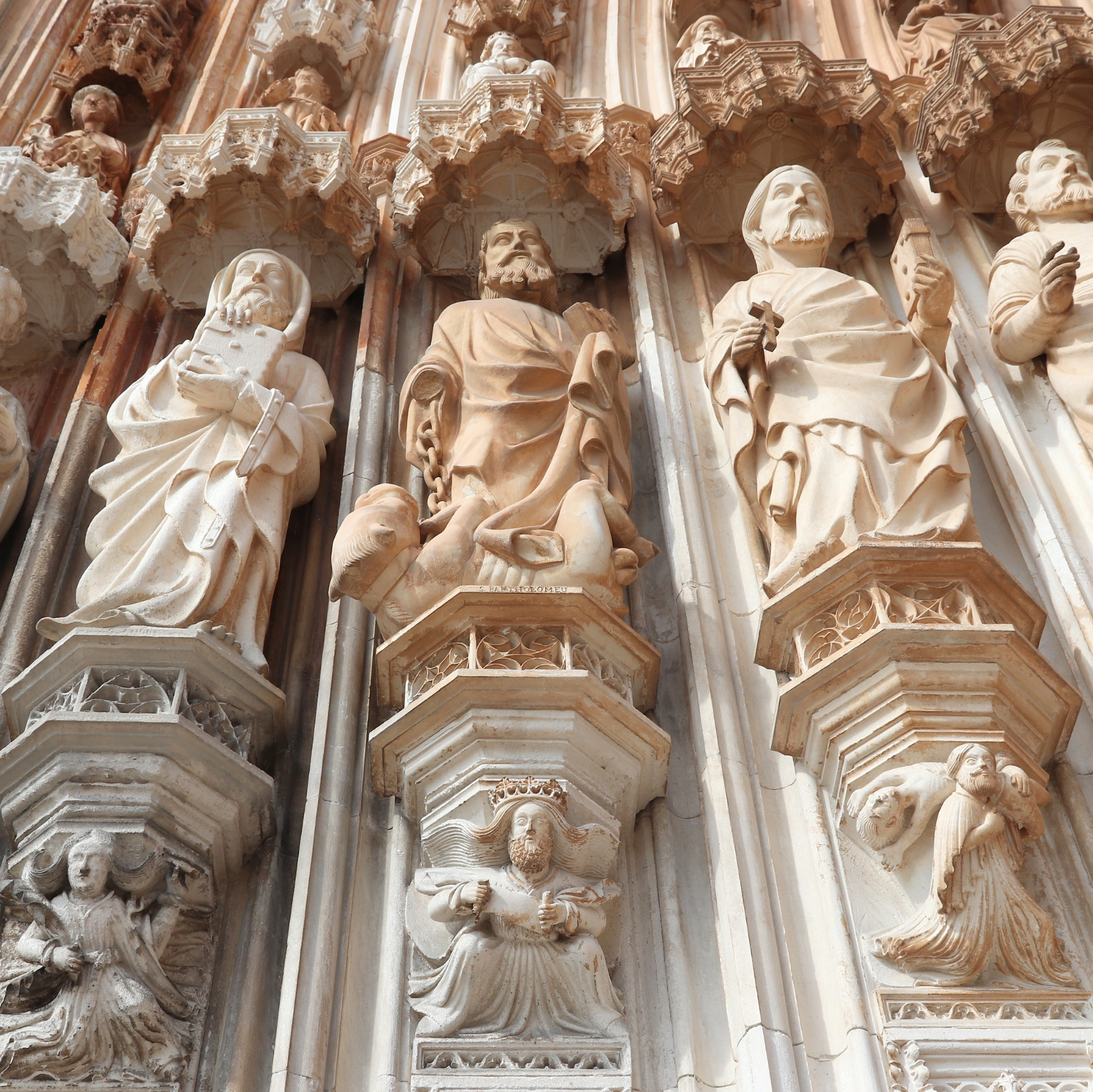Honoring the Catholic Saints: Celebrating All Saints’ Day and Living Their Legacy Year-Round
In Catholic schools, faith shapes the rhythm of learning, prayer, and community life. Celebrating the saints, holy men and women who faithfully followed Jesus and now share in eternal life in heaven, offers educators a powerful way to inspire students and deepen their understanding of the call to holiness.
All Saints’ Day, observed each year on November 1, is a powerful reminder of the universal call to holiness and an opportunity for Catholic schools and students to remember our own call to holiness, celebrate the saints, and draw inspiration from their lives. This article explores the Church’s teaching on the saints and offers ways to celebrate the saints in Catholic schools, on All Saints’ Day and year-round.
Bring the saints into your classroom all year long, starting with your All Saints’ Day celebration. Launch a “Saint of the Month” tradition with your Catholic school students using this free printable kit full of biographies, prayers, and hands-on activities.

Who Are the Saints?
In the Catholic tradition, a saint is any person who has lived a life of holiness on earth and now enjoys eternal life with God in heaven. The Church teaches that all Christians are called to be saints. Those in heaven—whether officially canonized or not—are saints because they lived heroically virtuous lives, offered themselves in love for others, or remained faithful even to the point of martyrdom. They are models of holiness who show us what it means to follow Christ fully.
The saints are living reminders that holiness is possible in every time, place, and circumstance. They encourage us by showing how ordinary people—students, parents, priests, religious, and laypeople—can live extraordinary faith.
Canonization
The Catholic Church has a careful process for officially declaring someone a saint for the entire Church to venerate. This process includes in three main steps:
Venerable: A deceased person is formally recognized by the pope as having lived a life of heroic virtue or offered their life in sacrifice.
Blessed: Beatification requires proof of one miracle through the candidate’s intercession (martyrs are exempt from this first miracle requirement). At this stage, the person may be honored locally or regionally.
Saint: Canonization follows after a second confirmed miracle (except in certain cases when the pope may waive requirements). The person is then recognized as a saint for the universal Church.
This process ensures that the lives of canonized saints are held up as trustworthy examples of holiness for Catholics everywhere.
Why Catholics Honor the Saints
Catholics honor the saints for two main reasons:
Saints offer us a witness of holiness. As role models. Their lives inspire us to follow Jesus more closely, whether through acts of charity, perseverance in suffering, or deep love of prayer.
Catholics believe the saints, already united with God in heaven, continue to care for us on earth. Therefore, we ask for their intercession. As we ask friends to pray for us, we ask the saints to intercede before God on our behalf.
Honoring saints is never worship; we worship God alone. Instead, celebrating saints reminds us that we are part of a larger family of faith, the Communion of Saints, united across time and eternity.
The Catholic Celebration of All Saints’ Day
All Saints’ Day is officially known in the Church as the Solemnity of All Saints. It is a Holy Day of Obligation, celebrated on November 1, meaning Catholics are called to attend Mass. The day recognizes all saints who share eternal life with God. It is a celebration of the countless faithful who have reached heaven, reminding us of the hope of eternal life and the call to holiness for every believer.
Why This Feast Matters in Catholic Schools
For Catholic schools, All Saints’ Day is not only a Holy Day of Obligation but also a valuable educational and spiritual opportunity. Celebrating all Saints’ Day helps students understand that sainthood is a universal calling, meant for each of them and every Christian, not just a few individuals in history. The celebration can strengthen your school community and highlights how every aspect of learning, across subjects, can be approached with faith.
Ways to Celebrate All Saints’ Day in Catholic Schools
Host an All Saints’ Day Mass and Prayer Service
Begin the day by attending Mass as a school community. Consider adding a prayer service where students learn about the Communion of Saints and pray for one another’s intentions.
Create a “Saint Parade” or Dress-Up Day
Many schools invite students to dress as their favorite saints. This engaging activity helps children learn about saintly lives in a hands-on, memorable way. Students can share a brief fact about “their” saint during the parade.
Classroom Projects and Research
Encourage older students to research a saint whose life connects to their own interests—scientists can learn about St. Albert the Great, artists about St. Catherine of Bologna, and athletes about St. Sebastian. Display posters or presentations in a hallway called, for the day, “Hall of Saints.”
Incorporate Art, Music, and Storytelling
Art: Younger students can make saint holy cards or decorate “stained-glass” windows with images of saints.
Music: Sing hymns like “For All the Saints” during a school assembly.
Storytelling: Read aloud saint stories, emphasizing courage, kindness, and love of God.
Acts of Service Inspired by the Saints
Tie your All Saints’ Day celebration to action. Students can collect food, clothing, or other donations in honor of saints known for service, like St. Vincent de Paul or St. Teresa of Calcutta.
Living the Saints’ Legacy Year-Round
Celebrating saints is not just about learning Church history—it’s about helping students recognize their own call to holiness. By learning about holy men and women, students see that faith is lived out in countless ways: in classrooms, hospitals, families, mission fields, and beyond.
For administrators and teachers, weaving saints into the school year strengthens Catholic identity, enriches the curriculum, and inspires students to live their faith joyfully.
Celebrating All Saints’ Day is a powerful start, but the witness of the saints can and should inspire Catholic schools throughout the year.
Integrating Saints into the Curriculum
Religion Classes: Highlight a “Saint of the Month” connected to liturgical feasts or school virtues.
History and Social Studies: Study saints who shaped culture, such as St. Thomas More or St. Joan of Arc.
Science: Introduce patron saints of science and medicine, like St. Albert the Great or St. Gianna Beretta Molla.
Language Arts: Read saint biographies and encourage students to write reflective essays on what they learned.
Building a Culture of Holiness
Beyond lessons, schools can create a culture that reflects saintly virtues. Some ideas include:
Virtue Recognition Programs: Celebrate students who demonstrate qualities like humility, kindness, and courage.
Prayer Corner or Shrine: Dedicate a space in each classroom to the “Saint of the Month,” including a short biography and prayer.
Patron Saint Connections: Invite students to research and adopt saints as personal patrons, learning to ask for their intercession regularly.
Celebrating Feast Days
Canonized saints have a feast day. A saint’s feast day is the date set aside by the Church to honor and celebrate that saint’s life, witness, and entrance into eternal life with God. Encourage teachers to acknowledge the feast days of well-known saints. A short prayer, classroom activity, or reflection helps keep the saints present in daily school life.
The saints remind us that holiness is possible for everyone, including and especially the students in our classrooms today. All Saints’ Day offers Catholic schools a beautiful opportunity to celebrate the Communion of Saints, honor holy role models, and inspire children to live lives of faith, hope, and love. By marking the feast with prayer, learning, and joy, and by keeping the stories of the saints alive throughout the school year, Catholic schools can nurture students who not only admire the saints but also strive to follow Jesus in their own unique and holy ways, enriching our communities of learning and the entire Church.
More Articles




Accreditations and affiliations ensuring a world-class online and blended education




 Student Login
Student Login